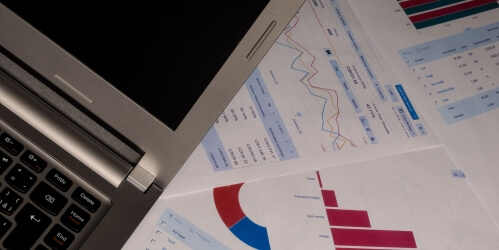Why should you develop an App?
There are two main motivations entrepreneurs usually have for developing an app. They either want to cash in on the app hype or they genuinely found a problem they want to solve with the app. Since the motivation has a big part in deciding whether you will be successful or not, you need to be sure you are doing it for the right reasons. Since it takes quite a big amount of time and dedication to develop a successful app, doing it so just for the money is usually a bad motivation. If you instead want to solve a problem for your customers, we have a few tips for you to help you on your way to the app store.
The Idea for your App
The base of every app is a general idea of its function. This can either be a totally new approach or an improvement on an already existing concept. In terms of difficulty it is far easier to improve upon an already proven idea, than to create something completely new. To achieve improvement, it is usually enough to take an existing process and make it easier, faster or cheaper for the customer. To show you what we mean, let’s take a quick look at an example.
Back in the day if you wanted to order food to your home, you had to visit and compare every food delivery website by hand. This took up a lot of time. Some smart developers decided to make this process a lot easier by programming apps. These apps would compare, sort and display all available options. The user just had to choose from the list. Later this was improved by introducing centralized payment and filtering options.
Just like that the developers took an everyday problem and solved it. This led to the birth of a whole family of apps, that would accumulate, compare and sort offers of all kinds. You just need to find a process where you can add value with your app and you are good to go.
The Demand for your App
Even the best App is worthless if no one wants to buy or download it. So before you dive head first into development, let’s take a look at your customers. To validate your idea, you will need to find a way to prove that customers want and will buy your app. You can usually achieve the best results by interacting with your potential customers and asking them directly. Either you go out there and do that in person or you use the internet in the form of message boards and social media. Once you know that there is an actual demand for your app, you know that your project isn’t just for vanity.
Since it’s always nice to have a bit of hard prove, you can also take a look at the google search data. Find out if the relevant keywords to your app have searches. This will also come in handy when you start marketing your app.
Developing your App
With both an idea and a proven demand under your belt, you can finally start building your app. But not without a plan. Unstructured development just leads to frustration and stress. To build such a plan you can start as such: Lay out all the features you want to implement into your app. Now identify what needs to be done to realise them. Every feature now has a time tag. In the next step you sort your features into essential and additional. Essential are the features you need to build a minimum viable product (MVP). Additional is the rest. You can now start to define a timetable that should look kind of like this:
- Develop an MVP as quickly as possible
- Start Marketing the MVP to beta users in the app store
- Prioritise the additional features again by workload and expected value
- Start by adding the ones with a low workload and high value
- Now the low workload and low value features
- Take your time to implement high workload and high value features
- Scrap everything that is high workload and low value
The great benefit of this plan is that you can get your app in front of customers as fast as possible. This allows you to incorporate customer feedback into your development, which in turn leads to a better product and happier customers.




